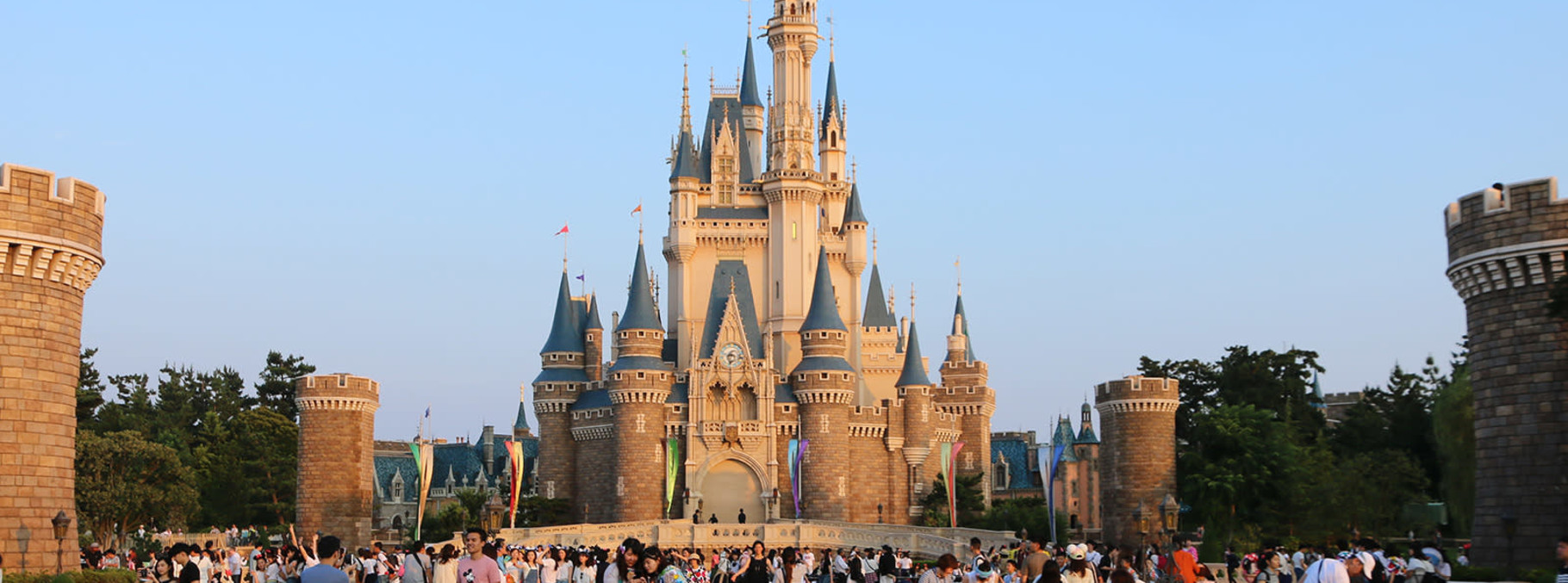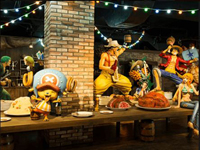Shitenno-ji
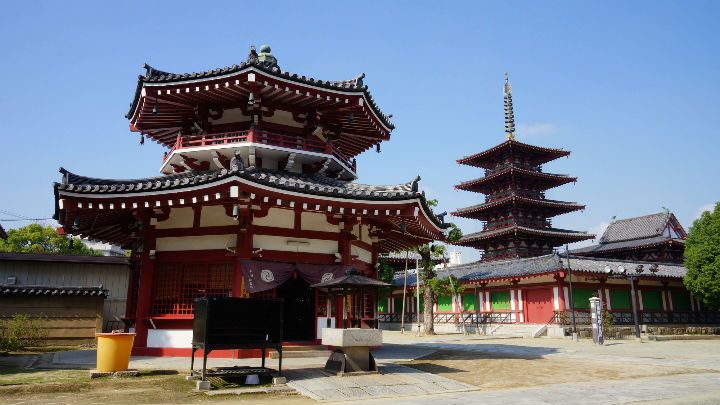
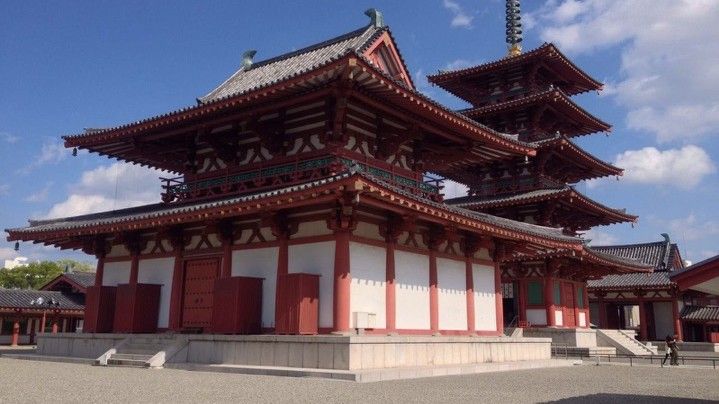
(Source: PIXTA)
Shotoku Taishi
When Shitenno-ji was built in 593, Shotoku Taishi, both royalty and a politician, worked as an aid to Empress Suiko who was reigning at the time. He sent envoys to the Sui Dynasty in an effort to import advanced continental Chinese culture and technology, and implemented various legislative systems as well as the constitution in order to establish a nation with the empress at the center. As a result of his ardent worship of Buddhism and his effort for its propagation and prosperity, he himself became an object of worship and it led to the production of many images of Taishi. He is said to have had the ability to hear and understand numerous persons speaking to him simultaneously and his countenance appeared on Japanese banknotes.
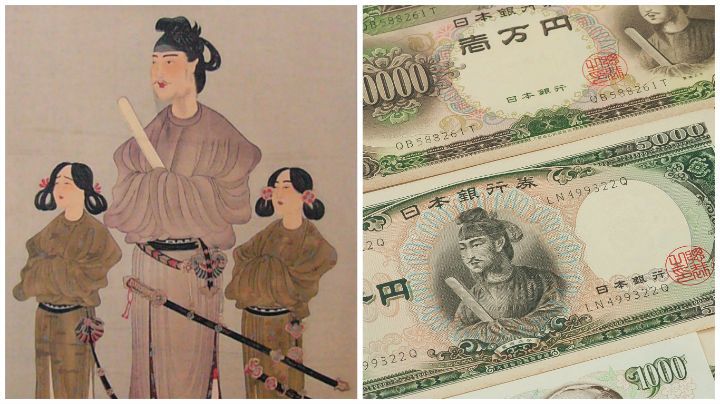
(Source: 左:Wikimedia Commons)
Central monastery
Three buildings are aligned in a straight line from the south gate and are surrounded by a connecting corridor, which is typical of the oldest architectural style in Japan. This style is said to have traveled from China and Korea. Shitenno-ji provides a valuable opportunity for you to see these magnificent architectural structures as they were in ancient times.
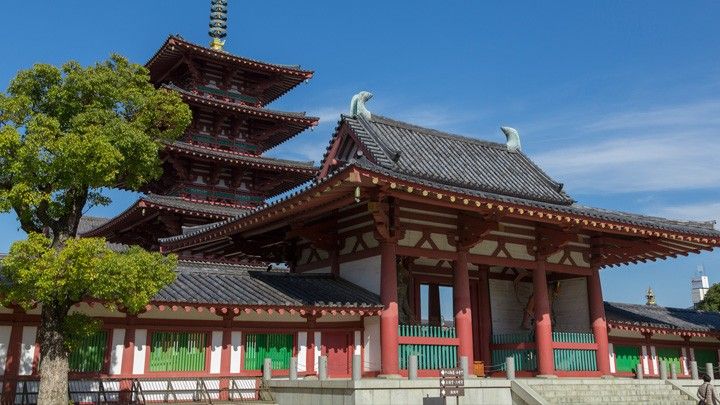
(Source: PIXTA)
Five-storied pagoda
Visitors can climb the tower from within to the top level. Displayed also in the pagoda are a mural, a mortuary tablet used in the ceremony for the dead and a Busshari, a stupa to honor Buddha’s ashes. (*Under construction until June 2016.)
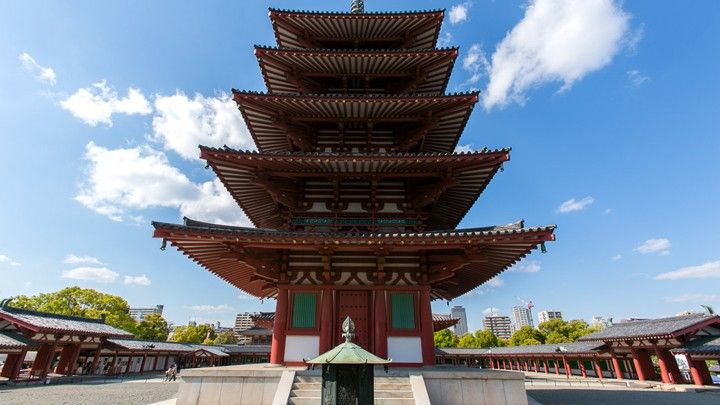
(Source: PIXTA)
Taishi-do
Enshrined in the front hall of Taishido, also known by the official name of “Shoryo-in,” are the statues of the 16-year-old Taishi and 2-year-old Taishi as well as Four Devas. Another statue of the 49-year-old Taishi is also present in the inner part of the hall, but it’s a treasured image unveiled to the public only once a year on January 22. On February 22, the anniversary of Shotoku Taishi’s death, an event is held for 2-year-olds to pay homage to Taishi. Prayers are offered for a healthy intellect to be bestowed on small children in the hall packed with families who brought them.
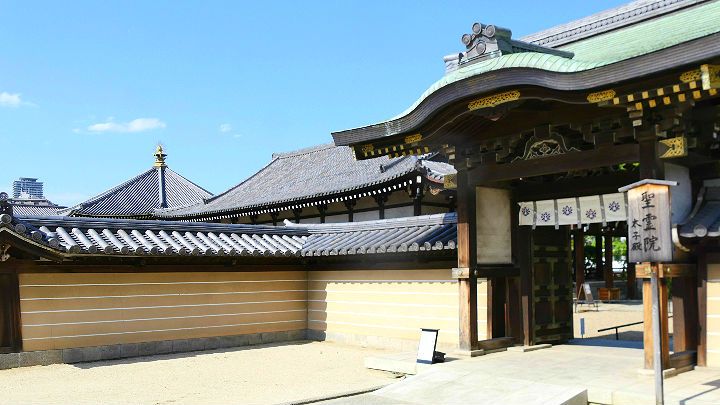
Many Important Cultural Properties
Shitenno-ji is known to have many important cultural properties including the “stone tori (a gateway arch to a temple/shrine),” one of Japan’s most famous three gates. “Rokuji-raisando,” literally translating to “Six times worship hall” and named so after six worshipping ceremonies conducted throughout the day and night, is one of Japan’s top three stages for ancient court music. A pond and a bridge in front of the hall add dignity to its appearance.

Daishi-e
Daishi-e refers to a fair commemorating the death of Kukai, a Buddhist monk, and Taishi. It is held in the precincts on the 21st and 22nd of each month. There are as many as 500 stalls, selling everything from daily necessities and antiques to food, and there is always a great turnout of visitors.
Morning Market “Watsuka-ichi”
Held on the first Sunday each month in Saijyumon Square is a morning market with many stalls selling organic vegetables and additive-free food, as well as bread, handicrafts and secondhand goods. (Hours: 9:00-15:00)

(Source: PIXTA)
Shotoku Taishi
When Shitenno-ji was built in 593, Shotoku Taishi, both royalty and a politician, worked as an aid to Empress Suiko who was reigning at the time. He sent envoys to the Sui Dynasty in an effort to import advanced continental Chinese culture and technology, and implemented various legislative systems as well as the constitution in order to establish a nation with the empress at the center. As a result of his ardent worship of Buddhism and his effort for its propagation and prosperity, he himself became an object of worship and it led to the production of many images of Taishi. He is said to have had the ability to hear and understand numerous persons speaking to him simultaneously and his countenance appeared on Japanese banknotes.

(Source: 左:Wikimedia Commons)
Central monastery
Three buildings are aligned in a straight line from the south gate and are surrounded by a connecting corridor, which is typical of the oldest architectural style in Japan. This style is said to have traveled from China and Korea. Shitenno-ji provides a valuable opportunity for you to see these magnificent architectural structures as they were in ancient times.

(Source: PIXTA)
Five-storied pagoda
Visitors can climb the tower from within to the top level. Displayed also in the pagoda are a mural, a mortuary tablet used in the ceremony for the dead and a Busshari, a stupa to honor Buddha’s ashes. (*Under construction until June 2016.)

(Source: PIXTA)
Taishi-do
Enshrined in the front hall of Taishido, also known by the official name of “Shoryo-in,” are the statues of the 16-year-old Taishi and 2-year-old Taishi as well as Four Devas. Another statue of the 49-year-old Taishi is also present in the inner part of the hall, but it’s a treasured image unveiled to the public only once a year on January 22. On February 22, the anniversary of Shotoku Taishi’s death, an event is held for 2-year-olds to pay homage to Taishi. Prayers are offered for a healthy intellect to be bestowed on small children in the hall packed with families who brought them.

Many Important Cultural Properties
Shitenno-ji is known to have many important cultural properties including the “stone tori (a gateway arch to a temple/shrine),” one of Japan’s most famous three gates. “Rokuji-raisando,” literally translating to “Six times worship hall” and named so after six worshipping ceremonies conducted throughout the day and night, is one of Japan’s top three stages for ancient court music. A pond and a bridge in front of the hall add dignity to its appearance.

Daishi-e
Daishi-e refers to a fair commemorating the death of Kukai, a Buddhist monk, and Taishi. It is held in the precincts on the 21st and 22nd of each month. There are as many as 500 stalls, selling everything from daily necessities and antiques to food, and there is always a great turnout of visitors.
Morning Market “Watsuka-ichi”
Held on the first Sunday each month in Saijyumon Square is a morning market with many stalls selling organic vegetables and additive-free food, as well as bread, handicrafts and secondhand goods. (Hours: 9:00-15:00)




